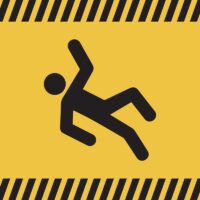What Are the Common Causes of Stairway Accidents in New York City?

New York City is known for its towering skyscrapers, historic buildings, and bustling public spaces. With this dense urban landscape comes a multitude of stairways, from subway stations to office buildings and apartment complexes. Unfortunately, stairway accidents are a common occurrence in the city, leading to injuries that can range from minor to severe. Read on as we explore the common causes of stairway accidents in New York City and discuss the legal implications for those affected. If you’ve been hurt in a stairway trip and fall or other accident in NYC, contact Leandros A. Vrionedes, P.C., to speak with an experienced and successful New York personal injury lawyer.
-
Poor Maintenance: One of the leading causes of stairway accidents is poor maintenance. This can include broken or loose steps, worn-out carpeting, or missing handrails. Property owners and managers have a legal obligation to maintain their premises in a safe condition, and failing to do so can result in accidents and injuries.
-
Inadequate Lighting: Stairways that are poorly lit can pose a significant risk to individuals, making it difficult to see obstacles or changes in elevation. Inadequate lighting can lead to trips, falls, and other accidents, particularly in areas with high foot traffic.
-
Slippery Surfaces: Wet or slippery stair surfaces are a common hazard, especially during inclement weather. Snow, ice, rain, or spilled liquids can make stairs treacherous, increasing the likelihood of slips and falls.
-
Obstructions: Objects left on stairs, such as debris, tools, or personal belongings, can create tripping hazards. Stairways should be kept clear of any obstructions to ensure safe passage for all users.
-
Design Flaws: In some cases, the design of the stairway itself can contribute to accidents. This can include uneven step heights, narrow treads, or a lack of proper handrails. Design flaws can be particularly dangerous in older buildings that may not meet current safety standards or building code requirements.
-
Overcrowding: In busy areas such as subway stations or event venues, overcrowding can lead to stairway accidents. When too many people try to use a stairway at once, it can be difficult to maintain balance and avoid collisions.
-
Wear and Tear: Over time, stairways can suffer from wear and tear, leading to weakened structures, loose railings, and other hazards. Regular inspections and maintenance are essential to prevent accidents caused by deterioration.
Legal Implications of Stairway Accidents
If you or a loved one has been injured in a stairway accident in New York City, it’s important to understand your legal rights. Property owners and managers have a duty to ensure the safety of their premises, and failure to do so can result in liability for any injuries sustained. Victims of stairway accidents may be entitled to compensation for medical expenses, lost wages, pain and suffering, and other damages. As the injured party claiming damages, it may be up to you to prove that the property owner knew or should have known about a dangerous condition on the stairway yet failed to fix it. You might also have to fend off attacks from the owner’s insurance company that your own negligence caused or contributed to the accident, which can negatively impact the value of your claim or keep you from recovering at all.
A personal injury lawyer can be an essential part of proving the property owner’s negligence and liability while fighting to see you are fully compensated for all the harm done to you. An experienced attorney will know what your claim is worth and see that justice is done in your case.
Contact Leandros A. Vrionedes, P.C., After a Stairway Accident in New York
At Leandros A. Vrionedes, P.C., we have a deep understanding of New York’s premises liability laws and are dedicated to helping our clients achieve the best possible outcome in their cases. If you’ve been injured in a stairway accident, call us today at 212-889-9362 for immediate assistance or a free consultation to discuss your legal options.


